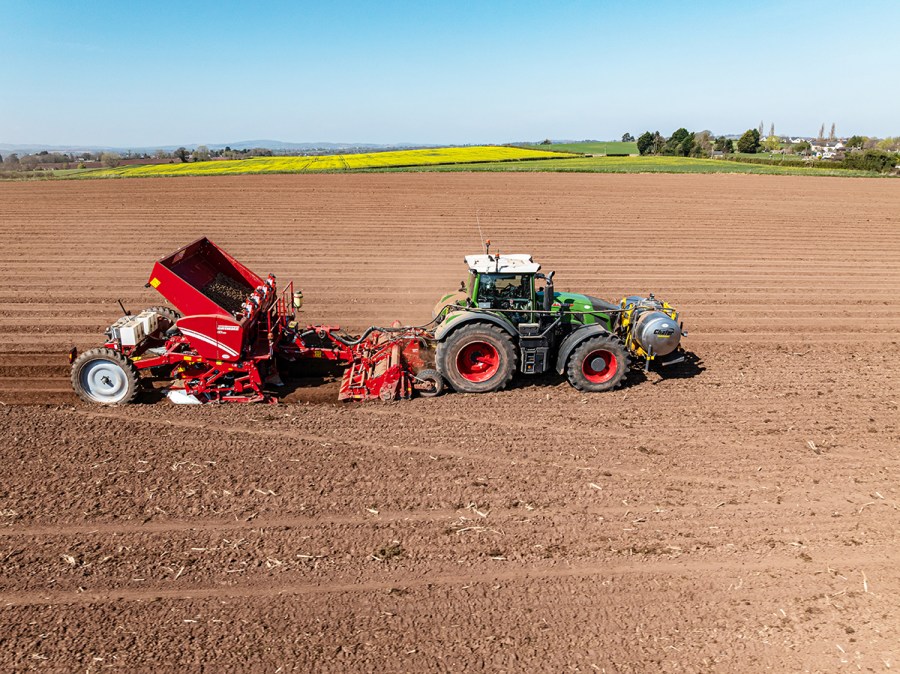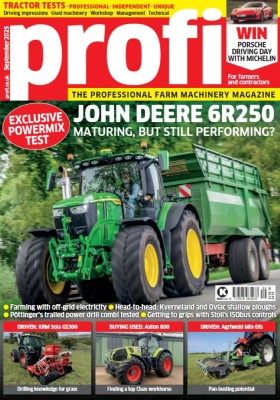The UK approach to planting potatoes is largely a one size fits all method, varying conditions dictate speed rather than how much metal is in the ground. B H Savidge & Son sought improvement and have managed to reduce the time and cost of establishment.
B H Savidge & Son farm near Ross on Wye, grow a wide variety of crops from berries to cereals, their potato crop alone amounts to 352 hectares per year. Their planting operation was scrutinised a number of years ago in search of efficiency, the business still runs a bed tiller-destoner-planter outfit, but three seasons ago, they invested in a bed tiller and planter combination.
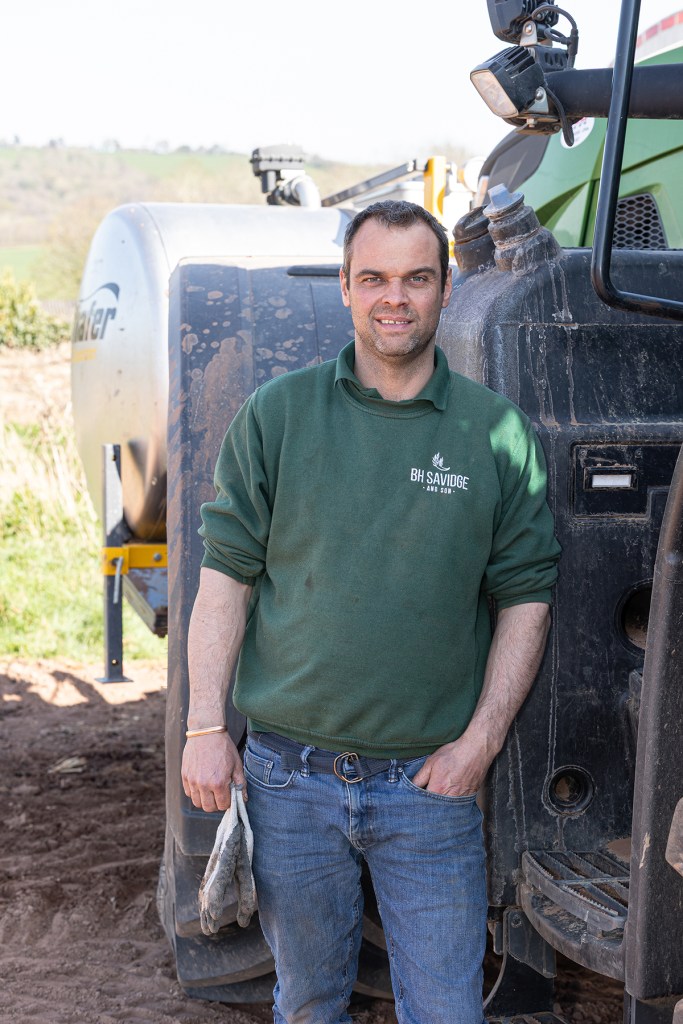
The concept wasn’t unproven, the farm had used a three bed, bed tiller ahead of a two row planter, with success, favourable soils and few stones meant forgoing the destoner was a viable plan. And taking a tractor and operator out of the equation too.

Grimme had the answer, the set-up is an off-the-peg solution… mostly, in that there isn’t a special build, the modular system can, and is broken down so the planter a GB420 can be used independently of the GF400 bed tiller with a drawbar system built into the linkage frame, and there is a pipework extension, so that the planter doesn’t have extra-long ancillaries.
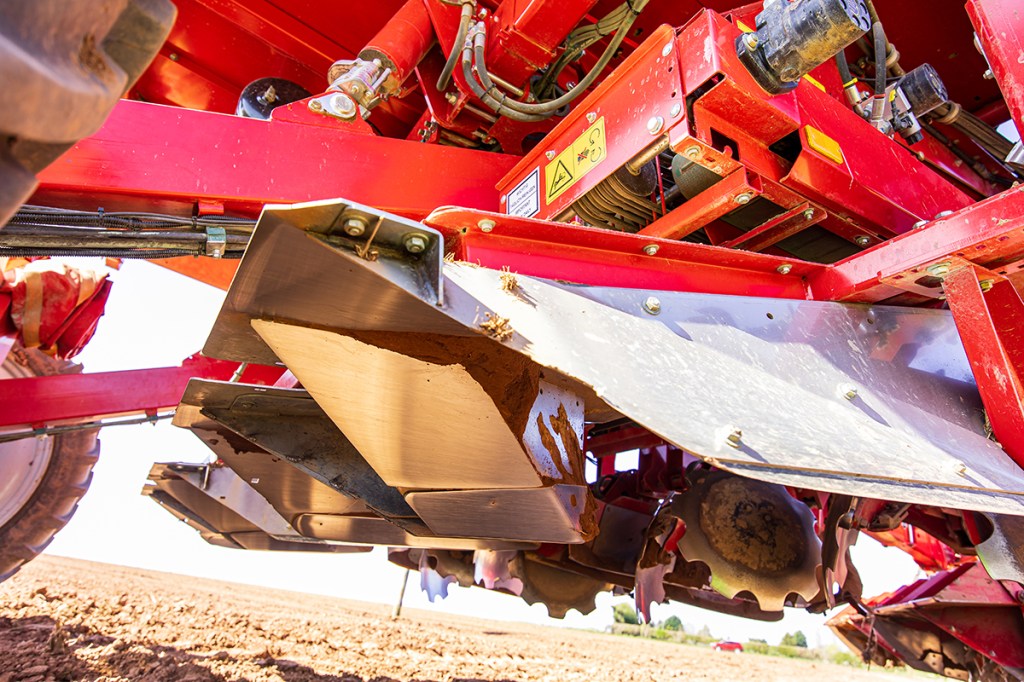
The tiller is occasionally used as a standalone for small areas, in the right soil. If the combination is separated and the area to be tilled doesn’t justify the time to hook the combination together. Having a second bed tiller adds a useful element of flexibility.
The mechanics of it
There are 130 hooked tines on the tiller, which is 260 nuts and bolts, there is a hardened tip which lasts well by all accounts, operator Jamie Manns said he replaced 70 tines during the 2025 season, with some of the tines being replaced for the first time in 650ha, others had been broken, as they don’t handle stones well.
One of the fixing bolts is M14 and acts as the shear bolt for protection. Jamie did say it would be better to have a blade rotor for stony conditions, but they know where those fields are and dispatch the destoning team to them.
There are a pair of wheel mark eradicators ahead of the tiller tines, these loosen the dirt well, and the tines behind see less wear. Fitted with a subsoiler style wing, these lift the soil to avoid leaving a soil deficit from the tractor’s footprint.
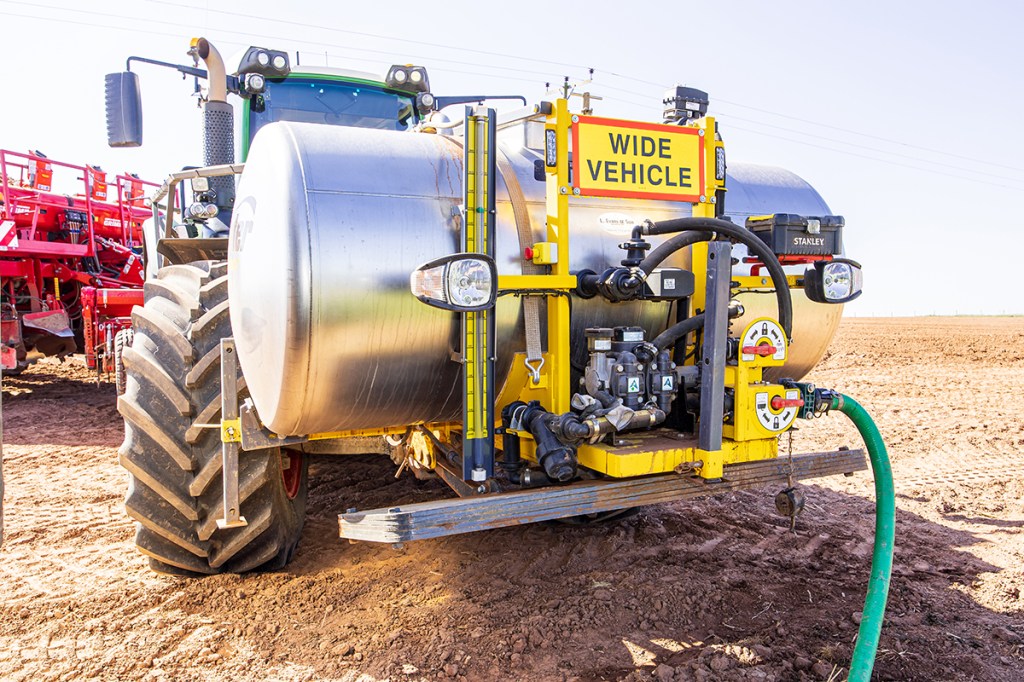
Depth is controlled by the wheels running ahead of the tiller, with some of the weight on the linkage, the setup isn’t light, but with VarioGrip set to 1.2bar, and a 700kg plate under the Chafer tank, the system carries well.
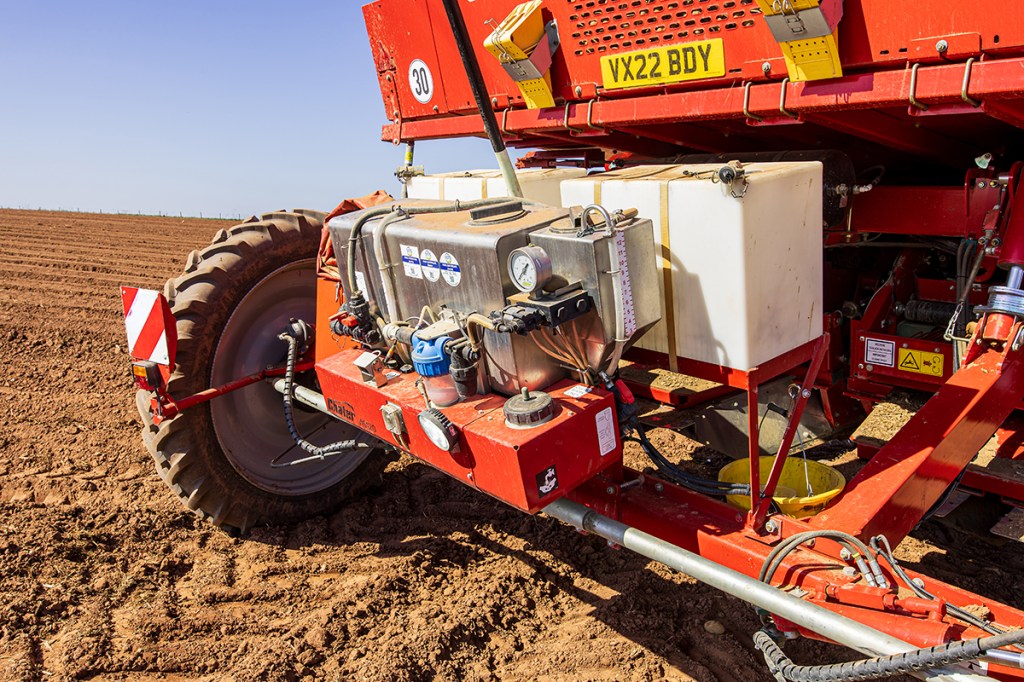
Ben Savidge pointed out that if the planter were on it’s own drawbar to the tractor, it would make the system work better as the planter weight on the tiller affects depth control and output. A compromise of keeping the system as compact as possible.
The outfit has planted 667ha in three seasons, about 180-200ha each year for B H Savidge themselves and some contract planting making up the balance. When we caught up with the planting rig it was in the last field for 2025 in the combi configuration, a nice 28ha block, with light soil after which the combination will be split and the planter used to follow destoners.
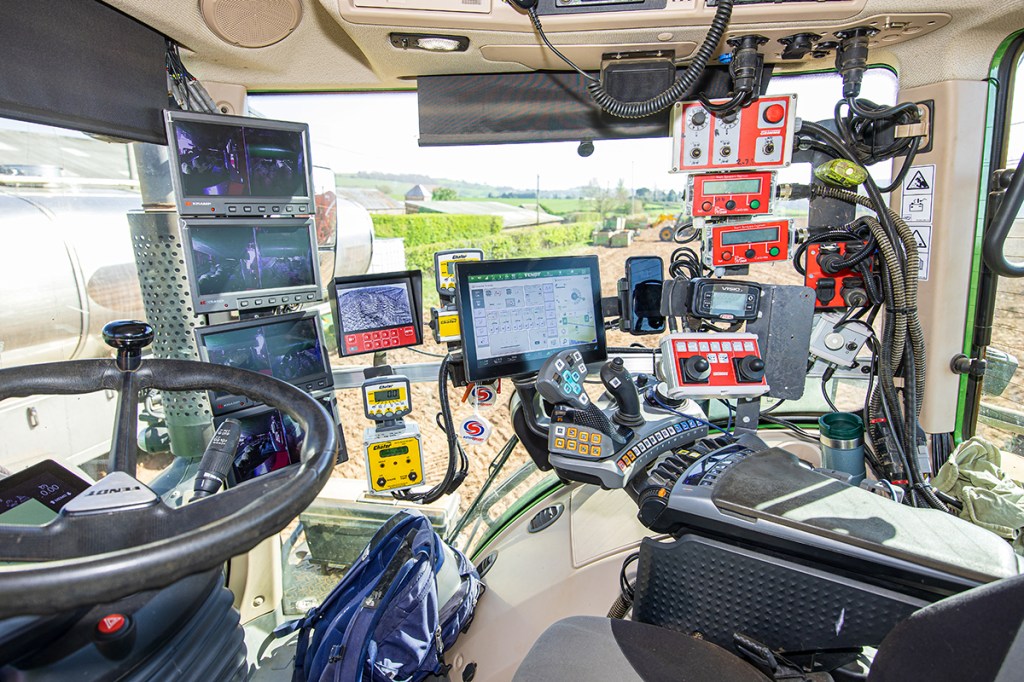
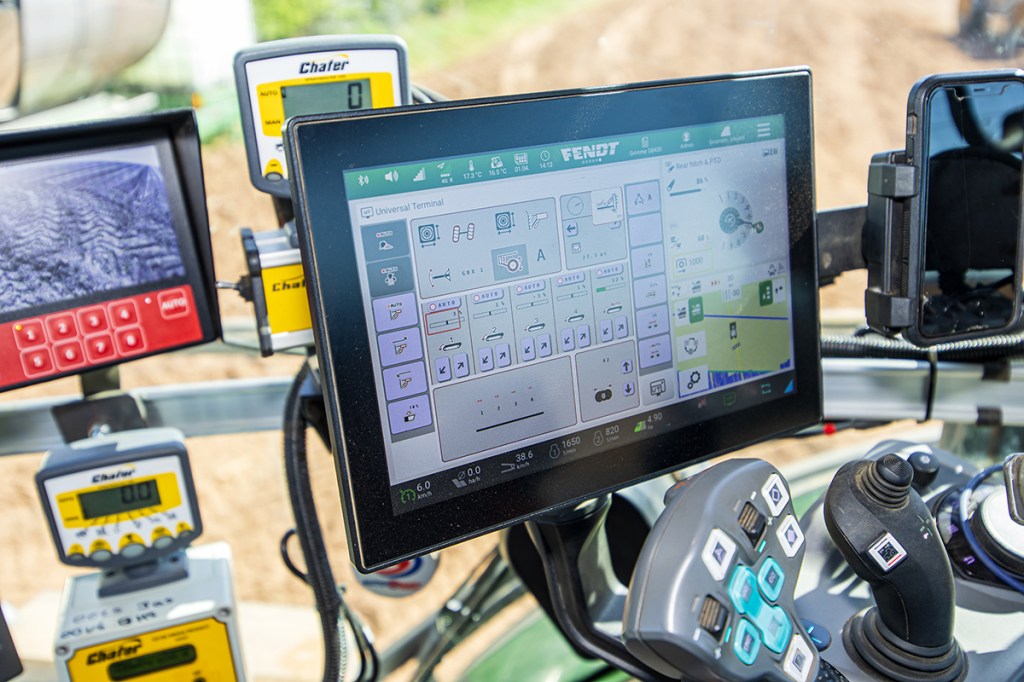
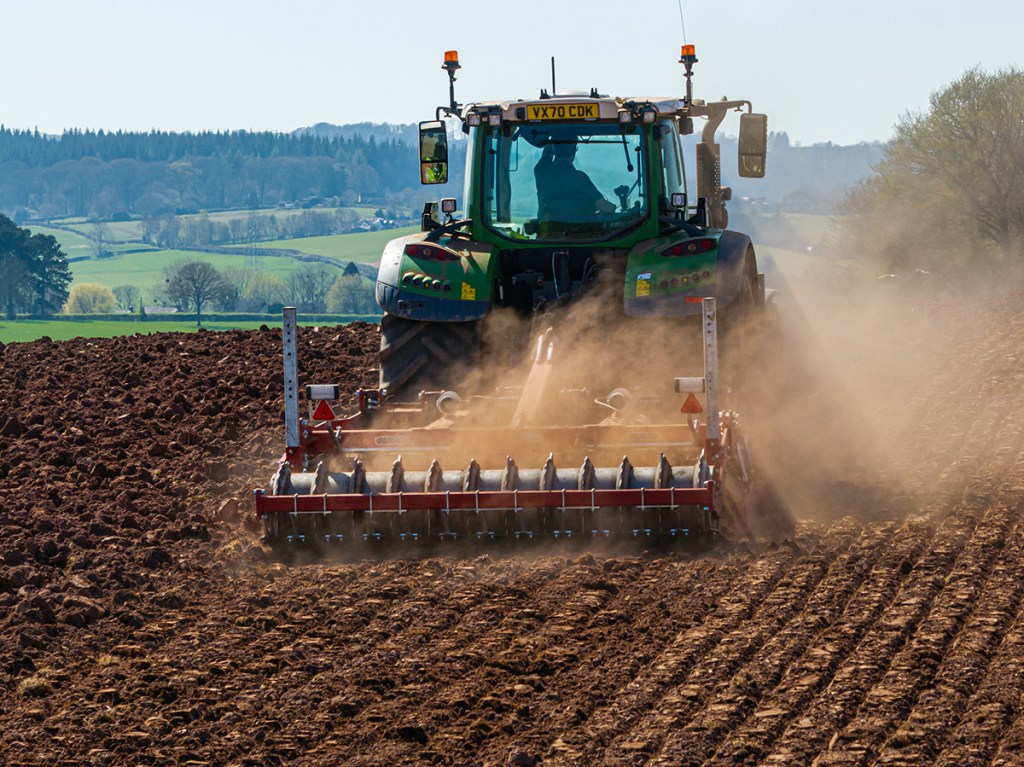
Planting
The field had been ploughed, and hadn’t baked, as it was quite light but had turned over lumpy, probably due to the previous wet harvested maize, so there was a six leg, 3.0m Sumo Trio knocking the ploughing down, and doing a good job of presenting the soil to the planter.
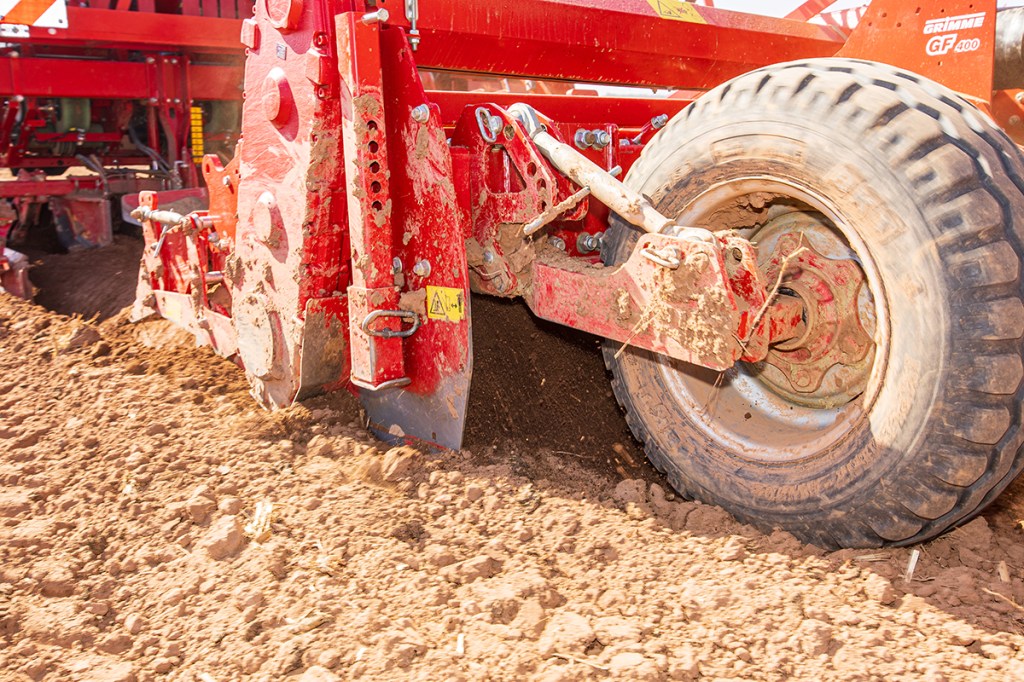
“If the land hasn’t been mauled, and ploughs nicely, you can go straight in, if the plough operator does a tidy job,” explains Jamie.
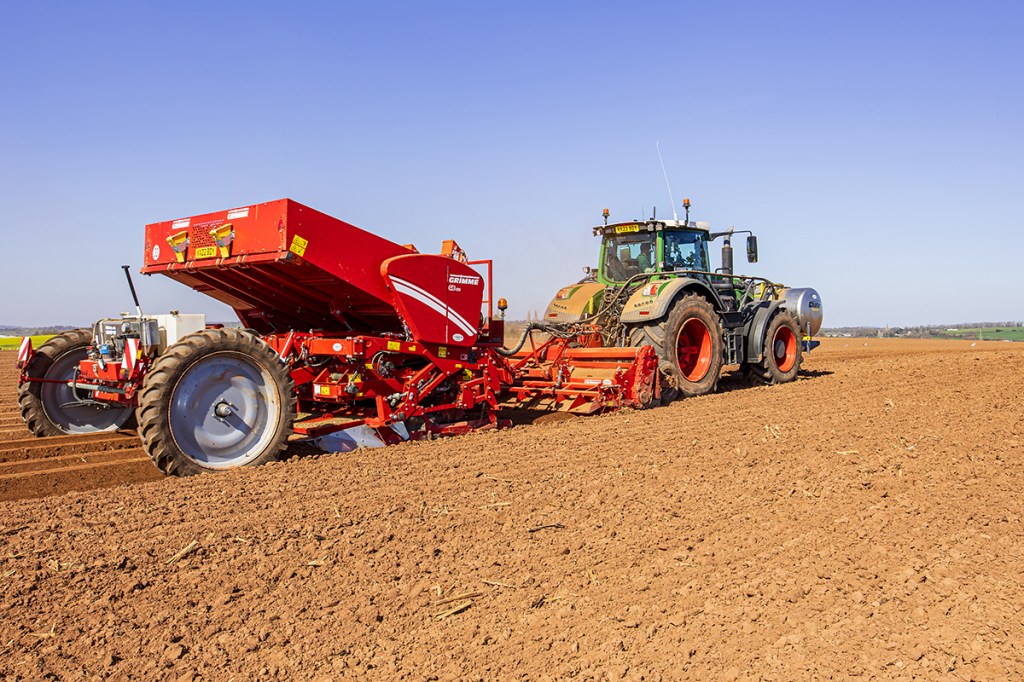
The bed tiller is working at 10-12” deep, and in the conditions present, the tiller had plenty of soil to create the two uniform beds shaped from the forming gates on the rear of the machine. The planter is set up for 72” beds and makes two sets of beds, with a defined gap between. The reason for this is the harvester, a two row Grimme V220 self-propelled, so keeping to a two-row system is better for lifting.
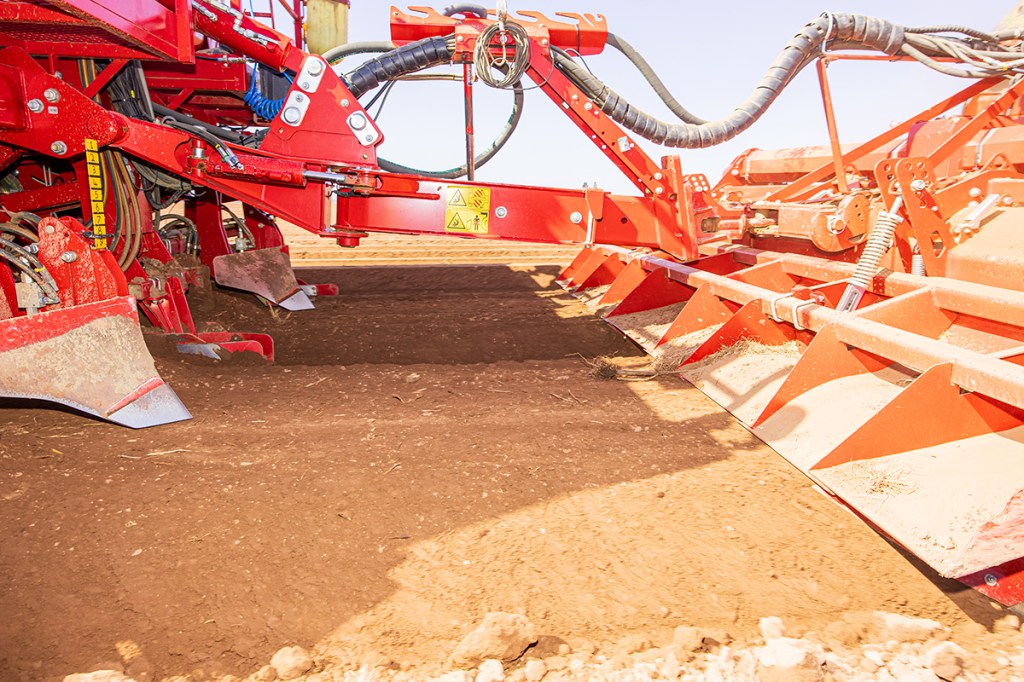
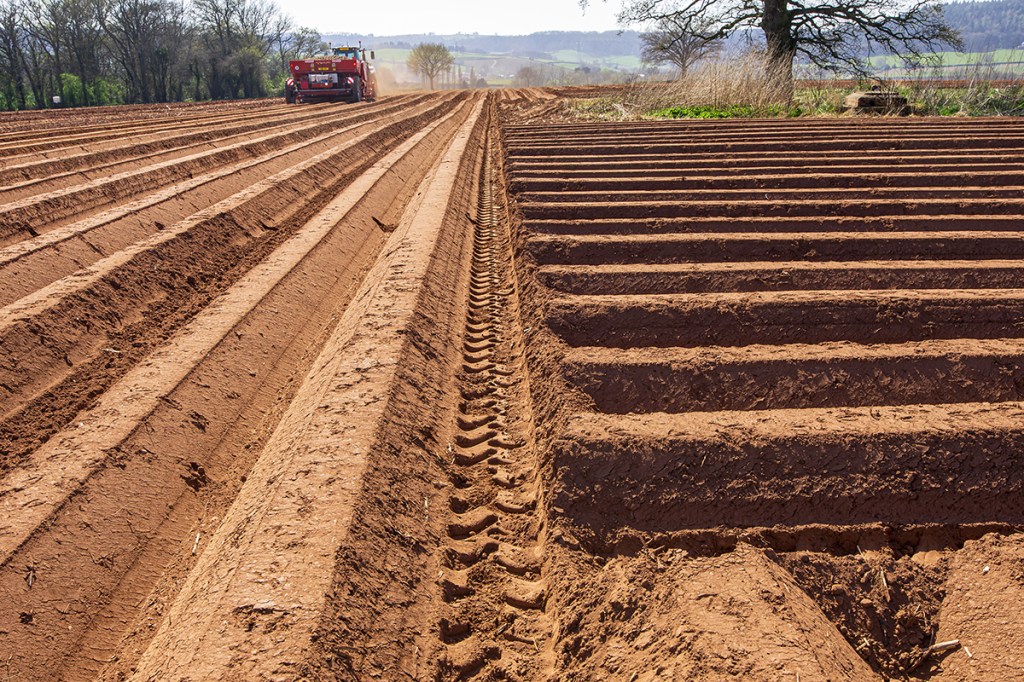
The operator interface is a little overwhelming to look at, but largely its self-managing. There are four Kramp monitors, these look at the belts on the planter front and back, Jamie fitted these in preference of the Grimme system. Meanwhile the Chafer applicators are managed with a boundary trigger, so look after themselves. There are two Chafer systems on board, one for the fertiliser and the other is the wet applicator for nematode treatment.
The Fendt one termina is used for controlling the actual planter. Although a CCI display came with the planter, the Fendt screen trumps it for graphics and speed. Seed spacing and planter condition is seen here. Jamie manually steers the planter on headlands, he’s slick with it, to the point it looks like an automated process as he turns and drops in, headlands are the same size as a conventional system.
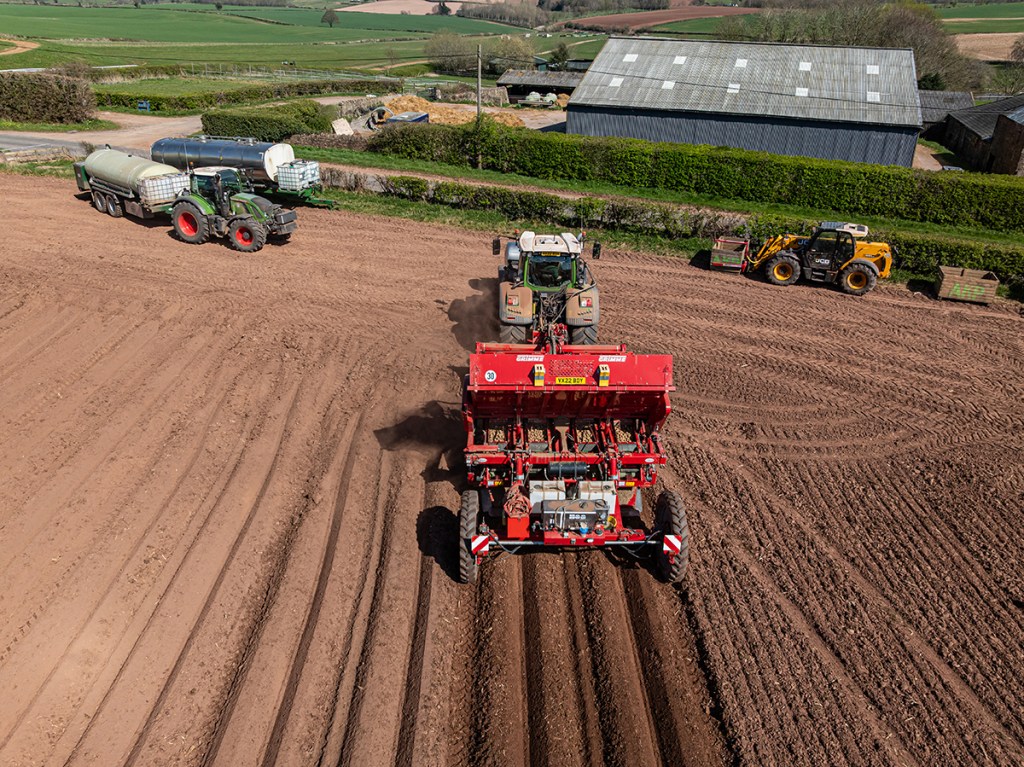
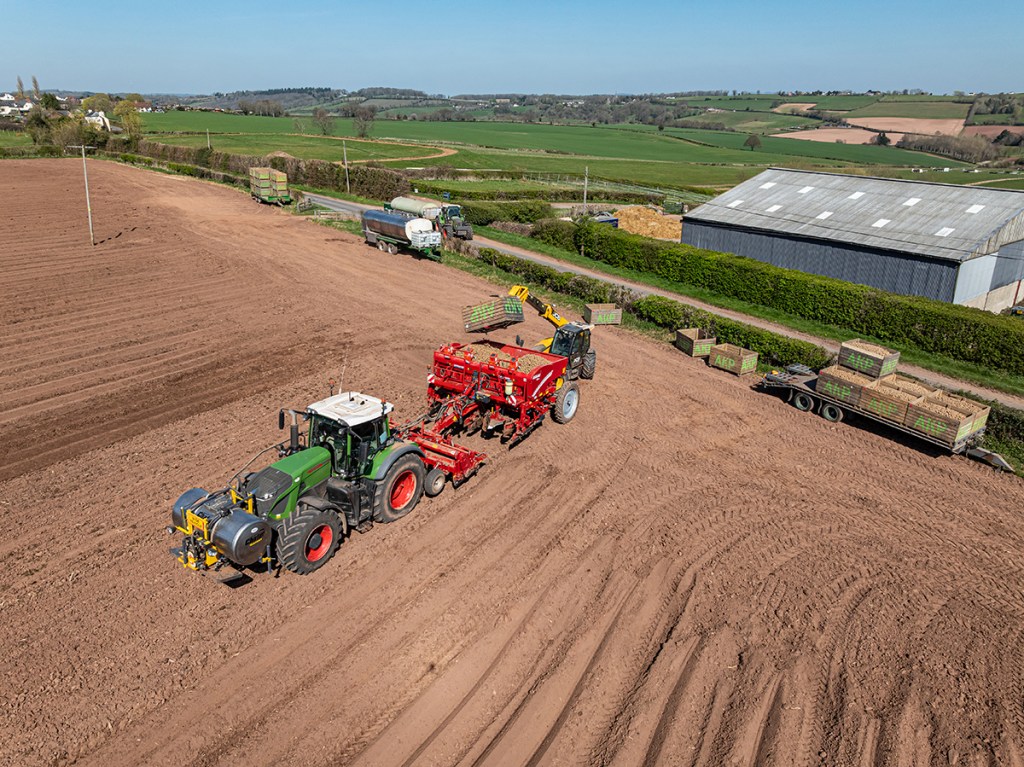
Operation
For the most part, Jamie operates on his own “It took a bit of getting used to, going from working with a team, to being on your own, but I quite like it now.” Other operators bring seed and change the fertiliser bowser, but mostly Jamie looks after filling himself, an opportunity to stretch his legs can be welcome.

Fertiliser was going on at 900l/ha so he can cover 2.2ha from the 2,000-litre tank (at this rate), this goes down behind a leg just ahead of the seed. The farm shifted to liquid fertiliser when the new system arrived, and have seen positive yield results because of it.
A leg in front of the drill opener has two pipes running down behind it, allowing the fertiliser to be placed right under the seed, but with just enough soil to ensure a barrier between the two.
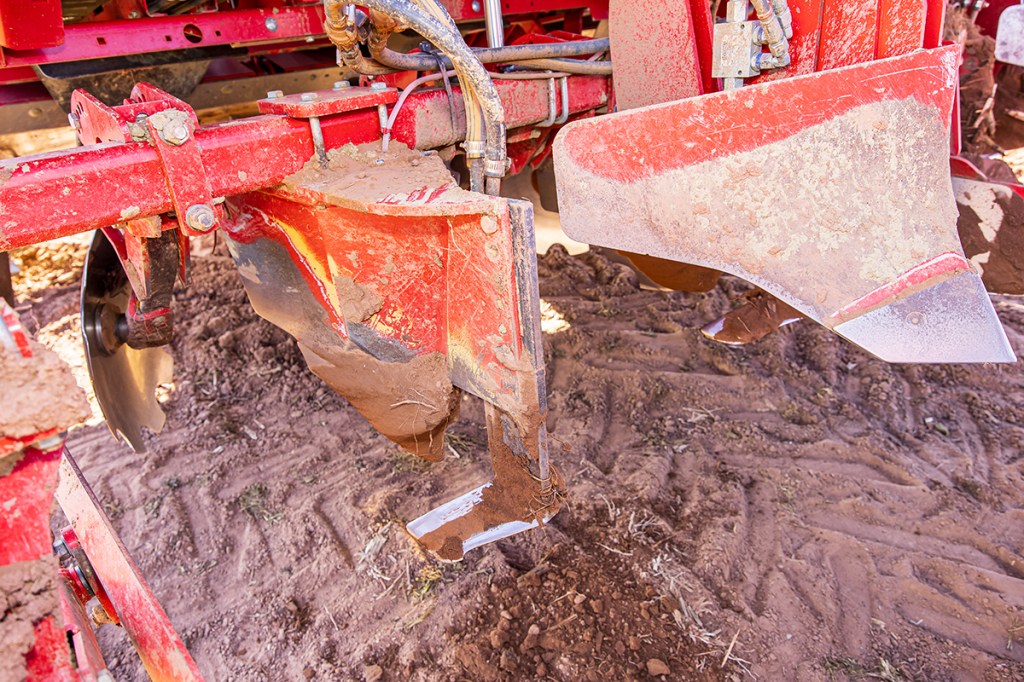
“Placing the fertiliser exactly under the seed has definitely made a difference to yield, and in dry conditions it’s more readily available, we’ve found prills in the soil well after the crop has put tops up in dry years” Ben Savidge points out.
The cost difference is negligible between liquid and prilled fertiliser as a commodity, there is more equipment involved in using liquid, but the results in challenging conditions have shown that the cost is outweighed by yield.
Velum Prime is applied in two places from nozzles in the drill opener, this is fed from a Chafer applicator at the rear which holds 120-litres, with two 100-litre plastic tanks added so the liquid lasts a fill of fertiliser (this system wasn’t in action when we visited, though Jamie has his PA tickets for that section). And there are four Team applicators for dry Rhino anti rhyizoctonia product.
The system is fairly slick, at each stop Jamie hooks the fertiliser pipe on, and then fills with seed, by the time he has topped the hopper off, the fertiliser is nearly full, he does need seed between each fert fill. The hopper holds four tonnes, needing two boxes per fill.
Planting Ivory Russet at 38-40cm spacing (the first of the season in Hereford) most of the B H Savidge crop is for processing, having seen a shift from packing in recent years. They grow longer varieties for chips.
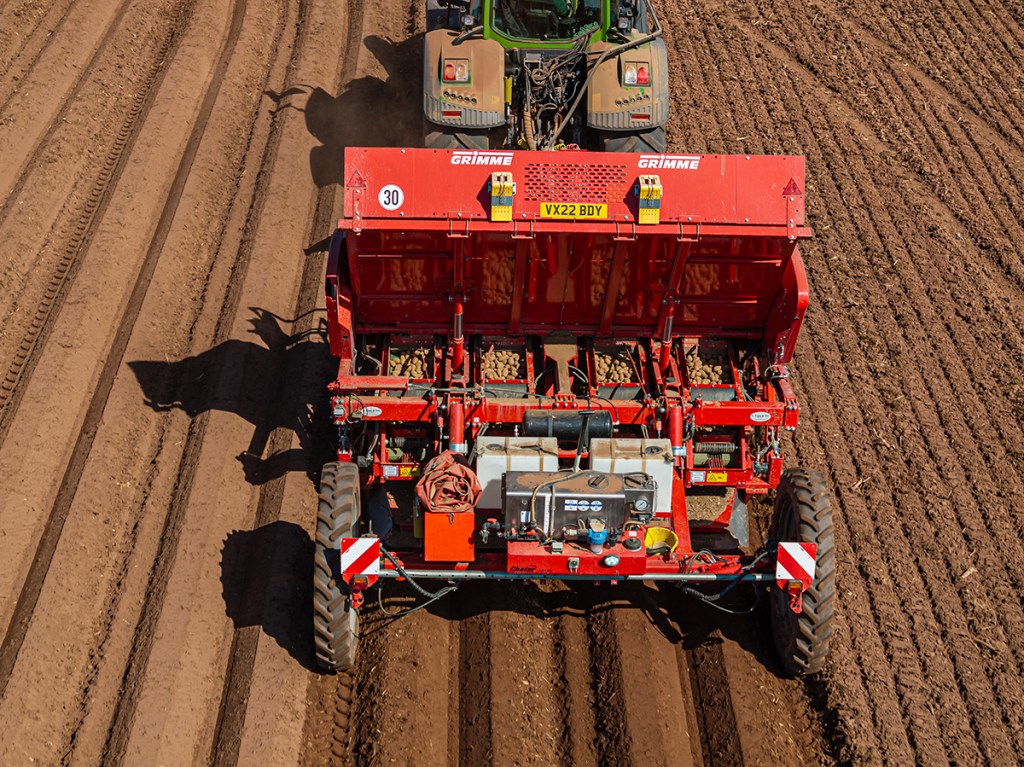
In the field, the system was travelling at 6km/hr, and working the Fendt 936 quite hard, the fuel consumption gauge was showing 59l/hr, and when a harder patch was found, the engine was grunting. “It can be down to 3km/hr in harder going, a 942 would manage better.”
On his own, in good going 10-14ha per day can be achieved, where planting into beds he can cover 16-20ha per day (with four-row planter and prepped beds ahead). Although slightly slower, with the combination the absence of other tractors is clear, other than the Sumo which was here on this occasion. If he can plant into ploughing there are two operations less ahead of the planter, kind of, obviously there is still a bed tiller, but there is one tractor instead of three or four.
An unexpected bonus is that Jamie can plant around obstacles and headlands as he goes, rather than waiting on a destoner to pass first, leaving a tidy finish without leaving turning areas. He doesn’t plant corners where the harvester can’t reach, as the combination also needs a margin behind.
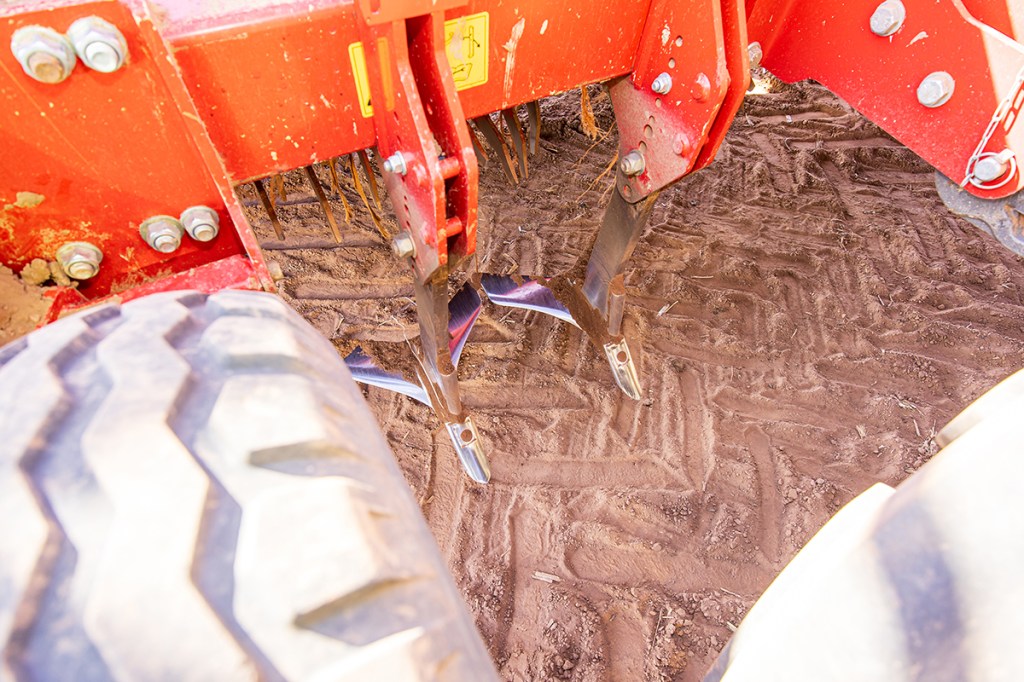
Cost of establishment
The plough isn’t the only solution for preparation, depending on the preceding crop, it’s sometimes better to rip the ground up with a Sumo Trio with deep legs, this can be followed again with the same machine a day later, or a stock trio, at an angle to the first pass.
Ploughing is sometimes better if there is substantial crop residue, like maize as was the case on our visit. The plough is as costly as two passes of the Sumo machines, Ben noting they are costed at £40 per hectare per pass, and the plough at £80/ha.
If the destoning team are out, the numbers quickly mount up per hectare. Ben costs these operations at £45/ha to ridge up out of ploughing, destoning at £135 and the planter at £120 which tots up to £515 per hectare and if the bed tiller is dispatched that adds £210 per hectare.

In contrast on the figures generated at the time, with some inflation adjustment, Ben recons the Combi unit costs £250/ha, with whichever method of land preparation ahead on top, where we were, it had been ploughed, £80/ha and needed a pass of the Sumo Trio at £40/ha to break up the furrows which is worse case £370/ha
Sill cheaper than the team with ridging, destoning and planting by quite a margin, obviously it’s not a free gain there is the capital investment in the extra machine. It’s estimated to need replacement after five years, to see reasonable resale and reliability. And it’s an extra set up, B H Savidge still run a ridger or three bed tiller with two CS150 destoners and a GB220 planter. However, their workload is halved, and wear along with it theoretically doubling their lifespan.
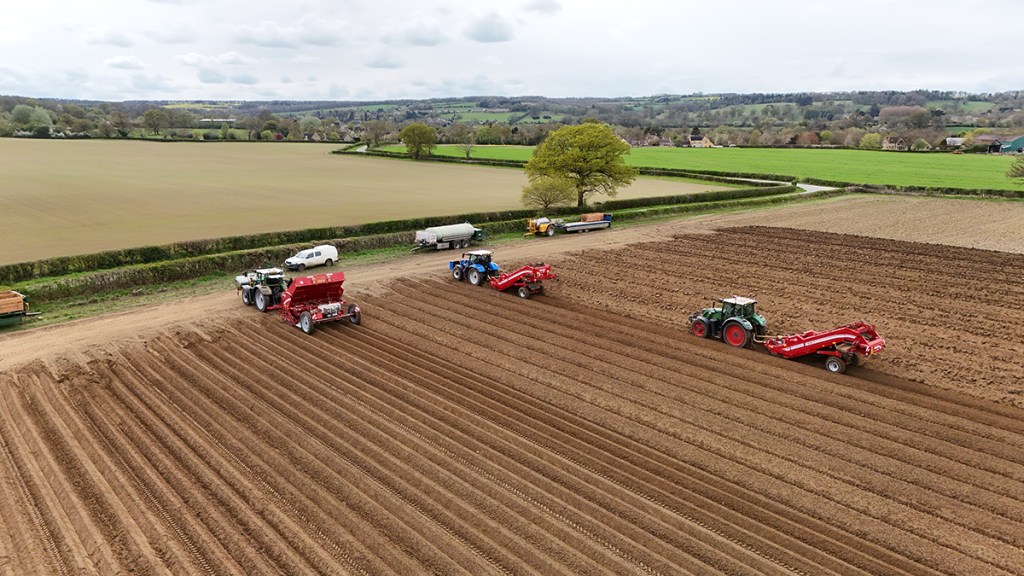
The destoning team work simultaneously with the combi, it’s not either or when planting is go, both systems are running. The Combi limitations are logistical, it has a VOSA dispensation and needs an escort, which doesn’t help on narrow lanes or tight places. The land it can’t get to easily is planted by the team.
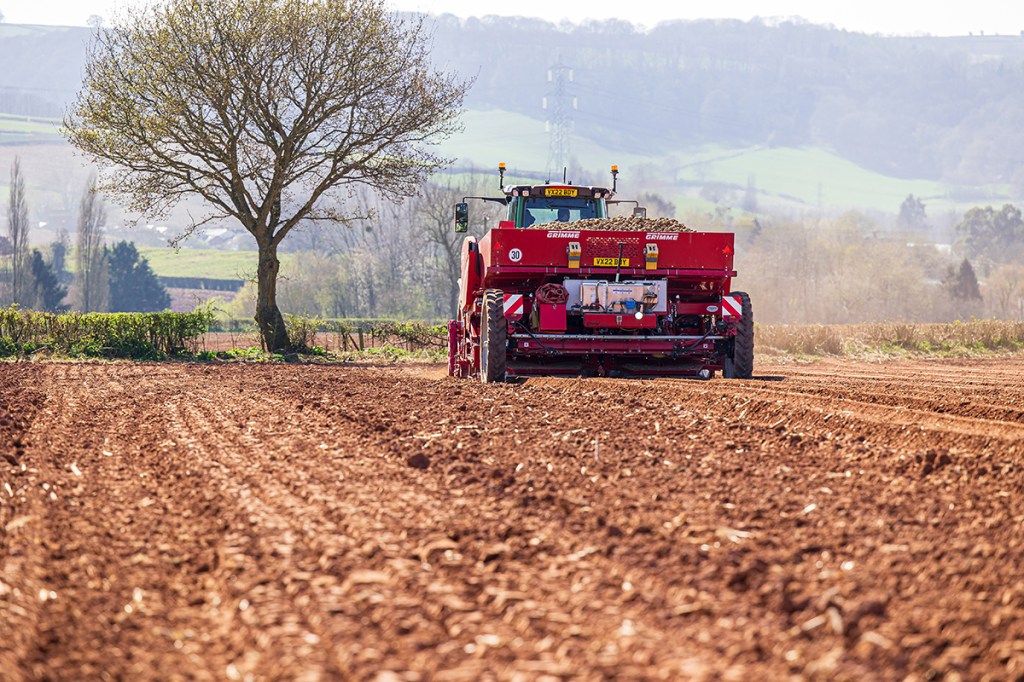
Without the tiller attached, the GB420 can be pulled with a Fendt 700 series, working offset, everything except the tiller is carried across to a smaller host tractor. Jamie says this is carried out in under a day, most of the work is in the switching the front tank and associated pipework.
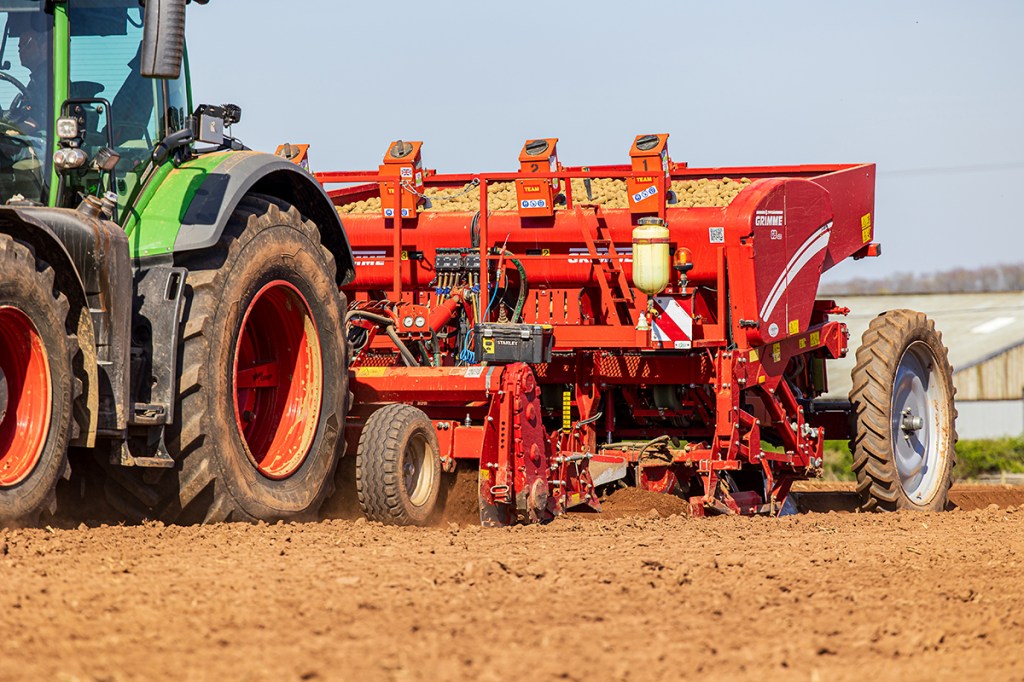
Flexibility
April 2025 was a perfect month for planting, dare we say a little too dry. When conditions are less ideal, the combi unit is actually first out of the blocks, the deep ridging tends to pull up wet soil which needs a couple of days to dry.
The GF400 tills the top and blends the drier soil with what’s underneath, giving the combination unit 24-36 hours head start. With one third of the amount of tractors in the field, there is one third of the wheelings, and the wheelings that are there are pulled up by the bed tiller, which in wet times will also be a bonus, because the Fendt 936 isn’t running row crop wheels either.
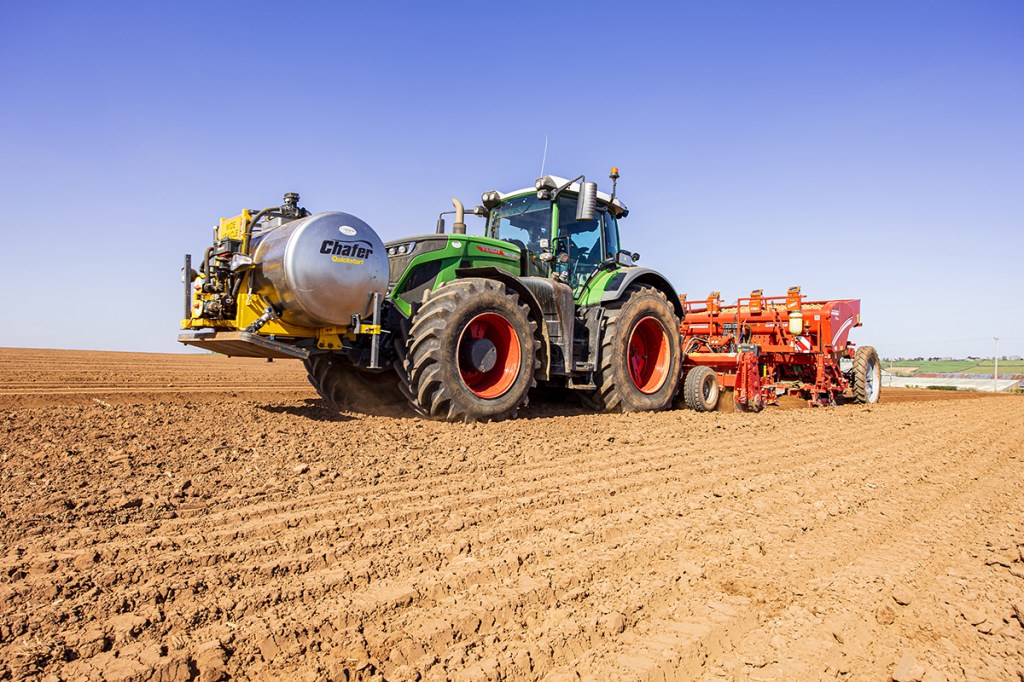
There are no reports of difference in compaction, despite no post planting wheelings except the sprayer, the farm hasn’t seen affects either way. Ben did note an option for an inter-drill spade wheel, that heaps soil to prevent run off during heavy rain events, but they haven’t found it necessary.
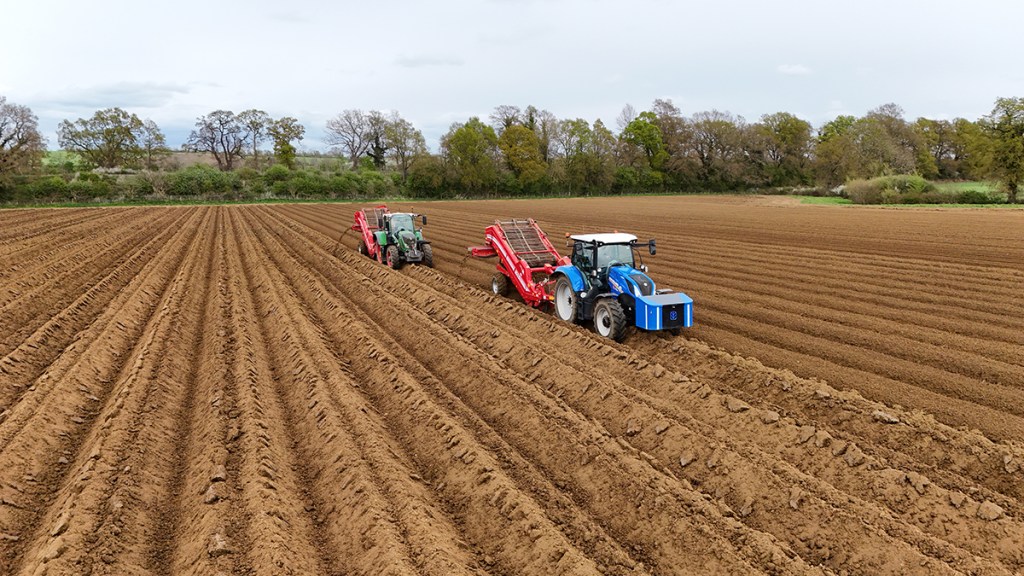
Summary
The system isn’t the solution for every grower in the British Isles, those who rent land on rotation would likely see this arrangement as a hindrance, removing the flexibility of their destoners. Let alone the logistics. But for the right grower with the right land type, the establishment figures speak for themselves.
Ken Topham
For more up-to-date farming news click here and subscribe now to profi and save.

